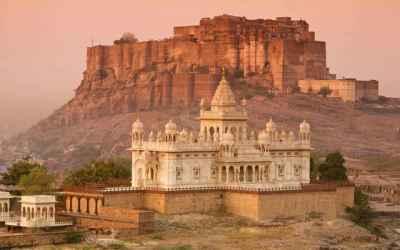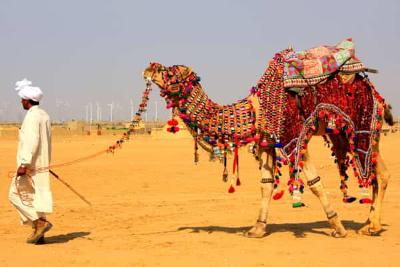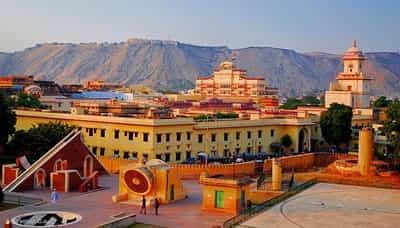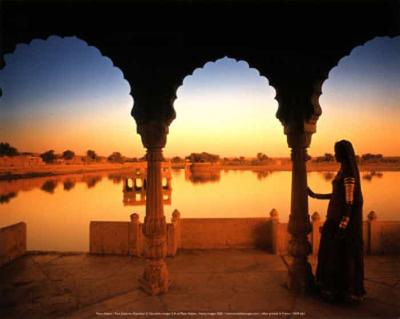Tracing the History of Mughal Influence in Rajasthan
Rajasthan, a land of mesmerizing forts, vibrant culture, and rich heritage, is also a treasure trove of Mughal influence. The Mughals, known for their architectural marvels and artistic finesse, left an indelible mark on the state. Tracing the history of Mughal influence in Rajasthan is like embarking on a fascinating journey through time, where each monument speaks volumes about the glorious bygone era. Let's delve into the magnificent world of Mughal architecture and artistry in Rajasthan.
The Mughal Dynasty and its Influence
The Mughal Dynasty, founded by Babur in the early 16th century, rose to prominence under the reign of Emperor Akbar. The empire spread across different regions of India, showcasing its grandeur through breathtaking palaces, forts, and gardens. Akbar, the visionary emperor, married Rajput princesses to form alliances and assimilate the Mughal and Rajput cultures. This amalgamation of cultures can be seen in the architecture and art of Rajasthan, blending Mughal splendor with Rajput finesse.
Fatehpur Sikri - The Abandoned Capital
Nestled on the outskirts of Jaipur, Fatehpur Sikri is a UNESCO World Heritage Site that truly embodies the magnificence of Mughal architecture. Built by Emperor Akbar, it was intended to serve as the capital of the Mughal Empire but was abandoned due to water scarcity. Fatehpur Sikri boasts of stunning structures like the Buland Darwaza, Jama Masjid, and the Diwan-i-Khas, which are a testament to the architectural brilliance of the Mughals.
Hawa Mahal - The Palace of Winds
Jaipur, the Pink City of Rajasthan, is home to the iconic Hawa Mahal. This unique structure, with its intricately carved façade and numerous windows, was built by Maharaja Sawai Pratap Singh in 1799. While not directly a Mughal monument, Hawa Mahal reflects the influence of Mughal architectural styles. The jharokhas (balconies) resemble those seen in Mughal palaces, allowing the royal ladies to observe the city's hustle and bustle from behind the ornate screens.
Amber Fort - The Majestic Fortress
Located just outside Jaipur, Amber Fort is a stunning example of Indian architecture embellished with Mughal elements. Built by Raja Man Singh I in the late 16th century, the fort displays a seamless blend of Rajput and Mughal architectural styles. The intricate marble and mirror work, along with the beautifully landscaped gardens, transport visitors to the grandeur of the Mughal era.
Mehrangarh Fort - A Marvel on a Cliff
In the blue city of Jodhpur, the Mehrangarh Fort stands tall and proud atop a cliff. This formidable structure, built by Rao Jodha in the 15th century, showcases the influence of Mughal architecture in its palaces, courtyards, and intricate carvings. The fort's museum houses a vast collection of Mughal artifacts, including royal belongings, paintings, and armaments.
Jal Mahal - The Floating Palace
As the name suggests, the Jal Mahal or Water Palace in Jaipur appears to float on the serene waters of the Man Sagar Lake. This architectural marvel was constructed by Maharaja Madho Singh I, and its design mirrors the style of the Mughals. The palace's symmetrical charm, with red sandstone and delicate chhatris (domed pavilions), coupled with the backdrop of the Aravalli hills, makes it a beautiful sight to behold.
Conclusion
Rajasthan, with its splendid forts, palaces, and architectural wonders, has beautifully preserved the Mughal influence that once flourished in the region. The fusion of Mughal and Rajput styles has given rise to a unique and awe-inspiring architectural heritage. Tracing the history of Mughal influence in Rajasthan allows travelers to not only appreciate the grandeur of the past but also delve into the rich cultural tapestry that makes this state truly special.
So, embark on a journey through Rajasthan's Mughal-era wonders and witness the architectural magnificence that continues to captivate travelers from around the world.
If you found this blog post informative and interesting, don't forget to share it with your fellow travel enthusiasts!
Disclaimer : The information provided in this blog is for general informational purposes only. While we strive to keep the content accurate and updated, TravelSetu assumes no liability for errors or omissions. If you believe any part of this blog infringes your rights or causes concern, please notify us immediately at info[at]travelsetu[dot]com so that appropriate action can be taken.







